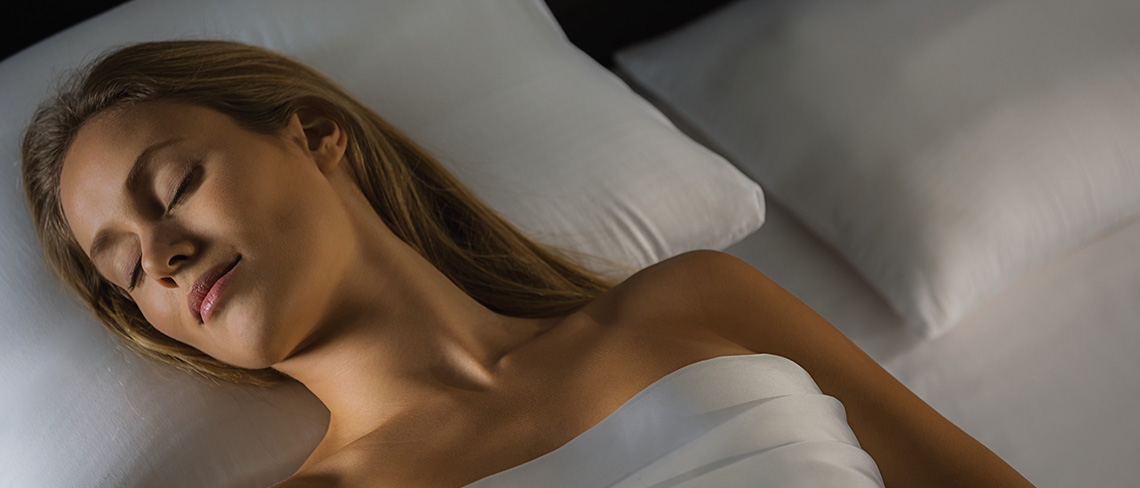
Tempur highlights the importance of sleep for those that suffer with Seasonal Affective Disorder.
Premium mattress brand Tempur has compiled a sleep guide to help combat symptoms of SAD and start 2019 feeling more prepared both mentally and physically.
“1 in 15 people in the UK suffer with SAD or Seasonal Affective Disorder[1], occurring four times more often in women than in men[2]” says Tobin James, Tempur UK Managing Director, “with symptoms including sleeping for longer than normal while still feeling lethargic, persistent low moods, loss of pleasure in everyday activities, as well as an inability to focus. There are, however, some simple changes people can make in order to tackle these symptoms – sleep being a fantastic place to start.
“We simply cannot function without sleep – it allows our brains to sort and store information and our bodies to repair themselves. A lack of sleep is in fact very closely linked to mental health problems such as anxiety and depression.
“There are a few key areas to tackle when looking to improve sleep hygiene to improve our overall wellbeing, including setting a regular bed time, cultivating a wind-down routine and considering physical environment.”
- Do you have a bed time? If not, why not?!
Start by setting yourself a time to aim to be in bed every evening. It may sound over the top but if you get used to sleeping at set times you will find it easier to sleep at that time every day. Our bodies release a hormone called melatonin that makes us feel naturally tired around 10-11pm but choose a time that works best for you. Remember that you should be aiming for between 7-9 hours a night.
- Wind-down routine
Most of us are guilty of expecting to nod off as soon as our head hits the pillow but the activities you do in the run-up to sleep can have a real impact on the quality and quantity of sleep you get. Go back to basics and create a relaxing wind-down routine to help you mentally and physically prepare for sleep. Electronics should be switched off at least half an hour before bed – the blue light emitted by smartphones is particularly detrimental to sleep as it can confuse your body into thinking it should continue to be alert and awake. Instead, opt for a relaxing lavender scented bath or shower followed by reading a book or magazine before bed. Alternatively spend the half an hour before bed chatting to family or friends about their day over a cup of soothing chamomile tea.
- What’s keeping you awake?
External factors are often ignored as the root of everyday sleep problems, however when coupled with SAD, this regular disruption to your sleep can severely impact your mood and ability to complete everyday tasks. If you live in a busy city or are a particularly light sleeper, some good quality ear plugs will help dull background noise and allow you to enjoy a night of undisturbed sleep. Similarly, feeling too hot or cold at night is a common complaint. Your bedroom should be between 18-20 degrees but don’t be afraid to increase or decrease this slightly in order to find the optimum temperature for you.
- Can’t switch off?
It’s not unusual to find your mind racing as you get into bed or if you wake in the night, but rather than trying to wait it out; get up, move to another room and do something else. Your bedroom should be primarily for sleep so it’s important to move yourself to an ‘awake’ environment if you’re having trouble sleeping. Activities such as colouring, reading and journaling can all help relax and steady the mind. Once you start to feel sleepy try returning to your bedroom for sleep.
- Don’t let pain get in the way of a good night’s sleep
Investing in a quality mattress really can make all the difference to your sleep and you really do need to test them out in order to find the product that provides the correct level of support for you. A good mattress will gently support your entire body while keeping your spine in a neutral position. This will not only help improve your quality of sleep – the more comfortable and supported you are, the less you will toss and turn – but will also help muscles recover overnight and alleviate any aches and pains.
- Quit napping
While it can be tempting to have a quick doze in the afternoon or on the way home from work, if you’re already struggling with sleep at night-time these early evening power naps can actually do more harm than good. Napping can interrupt the natural hormone surges that set us up for our main sleep so it’s best to not make them a regular occurrence.
- Be wary of oversleeping
SAD can also cause hypersomnia or oversleeping, which can be just as detrimental to your health as not getting enough sleep. In fact, oversleeping is much more common in SAD sufferers, affecting as many as 80%[3]. Crucially, however, the efficiency of this sleep is much lower than that of non-sufferers, with the amount of time spent in deep sleep significantly reduced. Other symptoms of hypersomnia include difficulty waking up in the morning, grogginess and difficulty concentrating.
So, while it can be tempting to go into hibernation mode in the darker, winter months you should make sure you’re not sleeping longer than you would at any other time of year – 7-9 hours a night is adequate.
- Start the day right
The darker mornings can be especially tough, but instead of hitting snooze on your alarm, open the curtains and switch on the bedroom light. This will signal to your body that it’s time to wake up. A refreshing shower is a great trick to feeling more awake, however it may be worth considering investing in a light therapy alarm clock which mimics the sunrise. This will help signal to your body that it’s nearly time to wake up and ease you gently into the day.
For more information on Tempur, visit www.tempur.co.uk
-Ends-
For further press information, please contact:
Elsa Findlay/Jo Kendall/Julie Aguilera
Rooster PR
T: +44 (0)20 3440 8930
E: [email protected]
About Tempur
Tempur researches, develops, engineers, manufactures and distributes mattresses, pillows and other sleep products to improve the sleep experience worldwide.
Tempur mattresses and pillows are made from a formulation of the brand’s proprietary pressure absorbing TEMPUR material, originally developed by NASA scientists in the 1970s to support and cushion astronauts during lift-off.
Tempur mattresses offer maximum quality, comfort, support, durability, value for money and aid a restorative night’s sleep.
Tempur is the no.1 mattress brand in Europe for customer satisfaction, with 9 out of 10 customers claiming they would buy Tempur again.
Tempur products can be purchased direct via the Tempur UK website, from any of eleven Tempur brand stores and outlets, or from leading retailers including Dreams, John Lewis, Bensons for Beds, Furniture Village and Land of Beds.
Trusted and promoted by medical practitioners around the world, Tempur is the only mattress product recognised by NASA and certified by the Space Foundation. Tempur’s Contour mattress is Good Housekeeping Institute Approved.
Tempur is a subsidiary of Tempur Sealy International Inc.
Tempur – a mattress like no other.
Follow Tempur:
- Twitter: @TempurUK
- Facebook: @TempurUK
- Instagram: @tempur_uk
- YouTube: https://www.youtube.com/user/TempurUKonTV
[1] https://www.mentalhealth.org.uk/a-to-z/s/seasonal-affective-disorder-sad
[2] N. Rosenthal, “What is seasonal affective disorder? Answers from the doctor who first described the condition,” Dr. Rosenthal’s personal website, http://www.normanrosenthal.com/seasonal-affective-disorder/
[3] “Sleep in fall/winter seasonal affective disorder: effects of light and changing seasons.” National Institutes of Health. https://www.ncbi.nlm.nih.gov/pubmed/8064650






